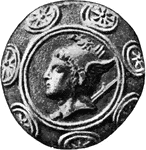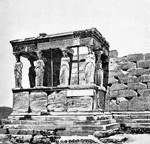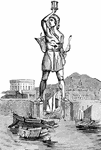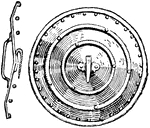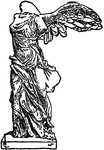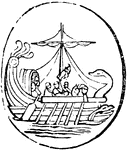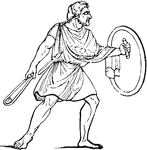The Ancient Greece ClipArt gallery offers 362 illustration of Greek history, events, and scenes of everyday life. For related images, please see Greek Mythology, Greek Architecture, Greek Ornament, Greek Coins, Greek Vases, and the Ancient Greek Musical Instruments ClipArt galleries.

Petasus
"The Petasus differed from the pileus or simple skull-cap in having a wide brim: the etymology of the…
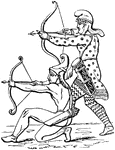
Phaetra
"A quiver, was principally made of hide or leather, and was adorned with gold, painting, and braiding.…
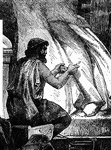
Phidias in His Study
"Phidias was the chief glory of the administration of Pericles. To him was committed the work of making…
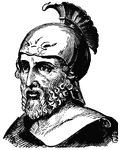
King Philip II of Macedon
(382-336 BC) King of Macedon 359-336 BC and father of Alexander the Great.

Statue of Phocion
"A more graceful mode of wearing the palla was to attach it by means of a brooch, and allow…

Pileus
"Any piece of felt; more especially, a skull-cap of felt, a hat. These seems no reason to doubt that…

Plaustrum
"A cart or wagon. It had commonly two wheels, but sometimes four, and it was then called the plaustrum…

Pnyx
"Shows the bema, or platform, from which orators addressed the assembled citizens."—Webster, 1913

Pugio
"A dagger; a two-edged knife, commonly of bronze, with the handle in many cases variously ornamented…
Pyxis
"A casket, a jewel-box. Quintilian produces this term as an example of catachresis, because it properly…
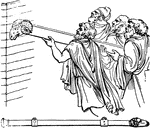
Battering Ram
"The battering ram was a large beam, made of the trunk of a tree, and having a mass of bronze or iron…
Retis
"A net. In hunting it was usual to extend nets in a curved line of considerable length, so as in part…

Retis
"In this woodcut, two men are carrying the net home after the chase, and hold in their hands two of…

Colossus at Rhodes
Statue of the Greek god Helios. It is currently considered to be one of the Seven Wonders of the Ancient…

Salatio
"Dancing. The dancing of the Greeks as well as of the Romans had very little in common with the exercise…
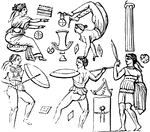
Salatio
"Dancing. The dancing of the Greeks as well as of the Romans had very little in common with the exercise…
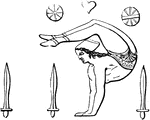
Salatio
"Dancing. The dancing of the Greeks as well as of the Romans had very little in common with the exercise…
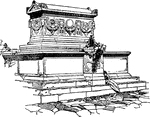
Sarcophagus
"Sarcophagus from the Street of Tombs at Assos in the Troad, excavated by the Archaeological Institute…
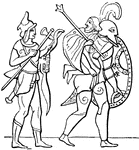
Sceptrum
"Sceptrum, which originally denoted a simple staff or walking stick, was emblematic of station and authority.…

Theater of Segesta
One of the first Greek amphitheaters, located in the political center of the Elymian people.

Silenus - Marble Sculpture
"In Greek mythology, a divinity of Asiatic origin, the foster-father of Bacchus, and leader of the satyrs,…

Siren
In Greek legends, the sea nymphs that were seated on the island of the Sirens, off the southwest coast…
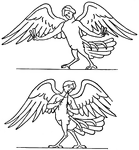
Sirens on a Greek Funeral Marble
"In Greek mythology, one of two, or three, or an indeterminate number of sea-nymphs who by their singing…

Port of Skala on the Island of Patmos
View of the Skala harbor on Patmos. It is on this island that John received his visions recorded in…

Soccus
"Soccus was nearly if not altogether equivalent in meaning to Crepida, and denoted a slipper or low…

Socrates
A classical Greek philosopher. He has become known for his contribution to the field of ethics, and…
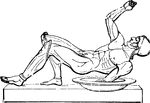
Fallen soldier
"Figure of a fallen warrior, represented among the sculptures now at Munich, belonging to the temple…

Greek soldier
"The early Greeks used a very short sword, as may be seen from the preceding cut. The ancient Homeric…

Greek Soldiers
"A group of Greek soldiers, drawn from sculptured figures in the temple pediment."—Gordy, 1912
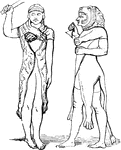
Greek soldiers
"'Exulting in the tawny covering of a she-wolf, such as his foster-parent was.' Alluding to the custom…

Speculum
"Speculum, a mirror, a looking-glass. The looking-glasses of the ancients were usually made of metal,…
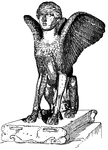
Sphinx of Lanuvium
A Graeco-Roman marble table support in the shape of a sphinx. It was found in the ruins of the Villa…
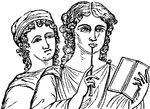
Stilus
"Stilus or Stylus conveys the general idea of an object tapering like an architectural column. It signifies:…


